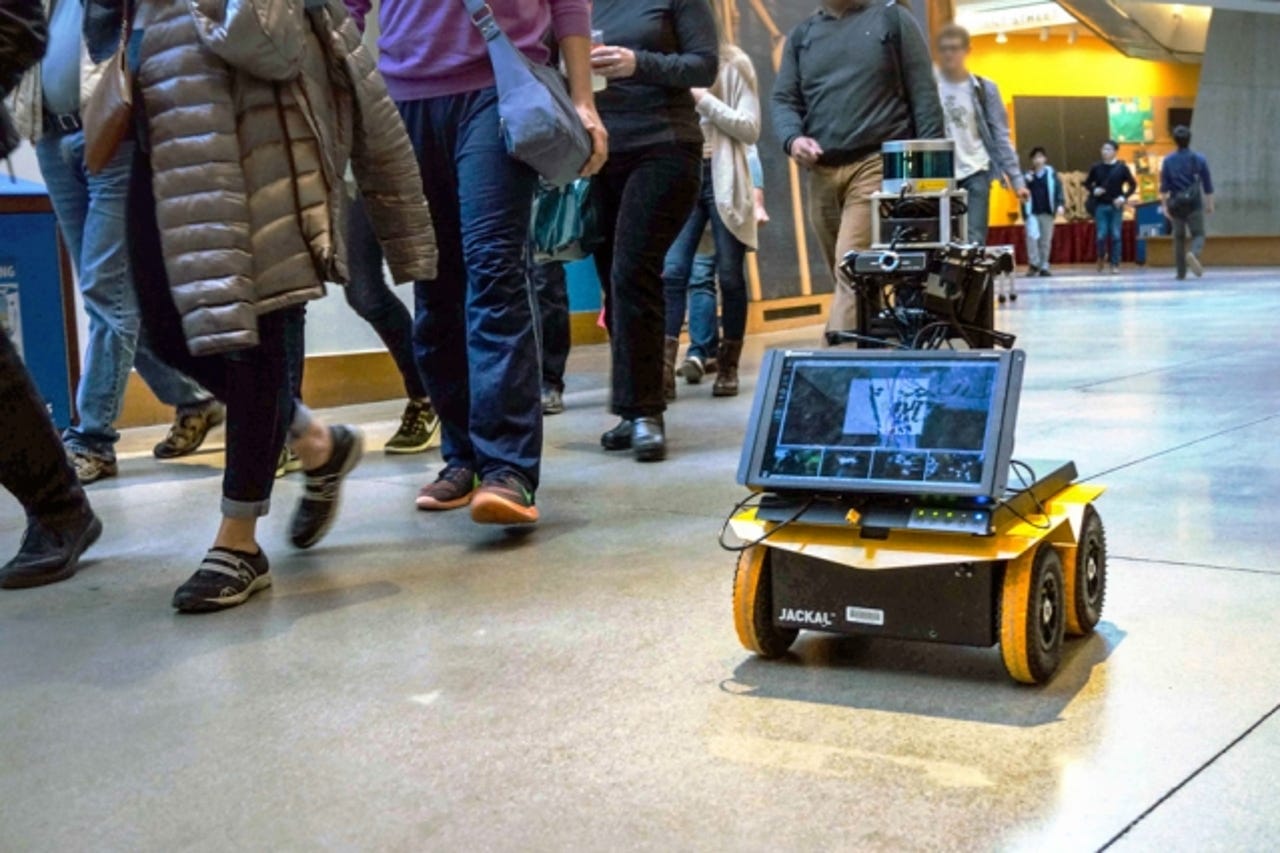This roving robot learned pedestrian manners


Suicidal security robots, pizza delivery droids, and self-driving cars. Humans and robots are starting to interact in the real world, raising important questions about safety and privacy.
But an equally important question is whether robots will have the social grace to cut it in our decidedly social world. Put another way: Can robots be polite?
A group of MIT researchers recently set out to program a mobile robot with awareness of social norms, and the results are encouraging.
"Socially aware navigation is a central capability for mobile robots operating in environments that require frequent interactions with pedestrians," says Steven Chen, who led the work as a former MIT graduate student and is the lead author of the study. "For instance, small robots could operate on sidewalks for package and food delivery. Similarly, personal mobility devices could transport people in large, crowded spaces, such as shopping malls, airports, and hospitals."
For their study, the researchers created a knee-high wheeled robot and equipped it with all the sensors and controls to recognize its surroundings and determine its location in the world. To make it polite, they had to figure out how design motion planning algorithms that correspond to the unwritten rules of the pedestrian road.
For example, in the U.S. we tend to veer right when walking toward an oncoming pedestrian. We also unconsciously slow down or speed up to avoid crowding fellow-pedestrians. Norms like these vary by country, but within a prescribed culture they're fairly consistent.
The problem proved trickier than it first seems.
"The part of the field that we thought we needed to innovate on was motion planning," Everett told MIT News. "Once you figure out where you are in the world, and know how to follow trajectories, which trajectories should you be following?"
One possible approach was to have the robot predict what the people around it would do, essentially calculating the optimal trajectories of each member of a crowd, and then apply strict rules for how it should proceed.
But this is extremely difficult to do in real time, especially since the situation is constantly changing. Using this method, processing time would be too large a constraint.
An alternative was to allow the robots to use geometry and physics to more loosely infer trajectories. But humans are unpredictable, and that can lead to unsafe mistakes.
"We want it to be traveling naturally among people and not be intrusive," co-author Michael Everett says. "We want it to be following the same rules as everyone else."
The researchers eventually accomplished this using machine learning. The robot learned to predict pedestrian behavior through observation. The robot also learned civility over time. When it passed someone improperly, for example, it was penalized. When it made a proper passing maneuver it was rewarded--much the way children learn good manners.
"We're not planning an entire path to the goal--it doesn't make sense to do that anymore, especially if you're assuming the world is changing," Everett told MIT News. "We just look at what we see, choose a velocity, do that for a tenth of a second, then look at the world again, choose another velocity, and go again."
The team tested their robot in the busy halls of MIT's Stata Building--perhaps the one place in the world where a roving robot actually wouldn't draw a second look or, crucially, alter the natural behavior of pedestrians.
The robot was eventually able to drive autonomously and politely for twenty minute stretches.
In addition to Chen and Everett, the study's co-authors were Miao Liu, and Jonathan How, the Richard Cockburn Maclaurin Professor of Aeronautics and Astronautics at MIT.